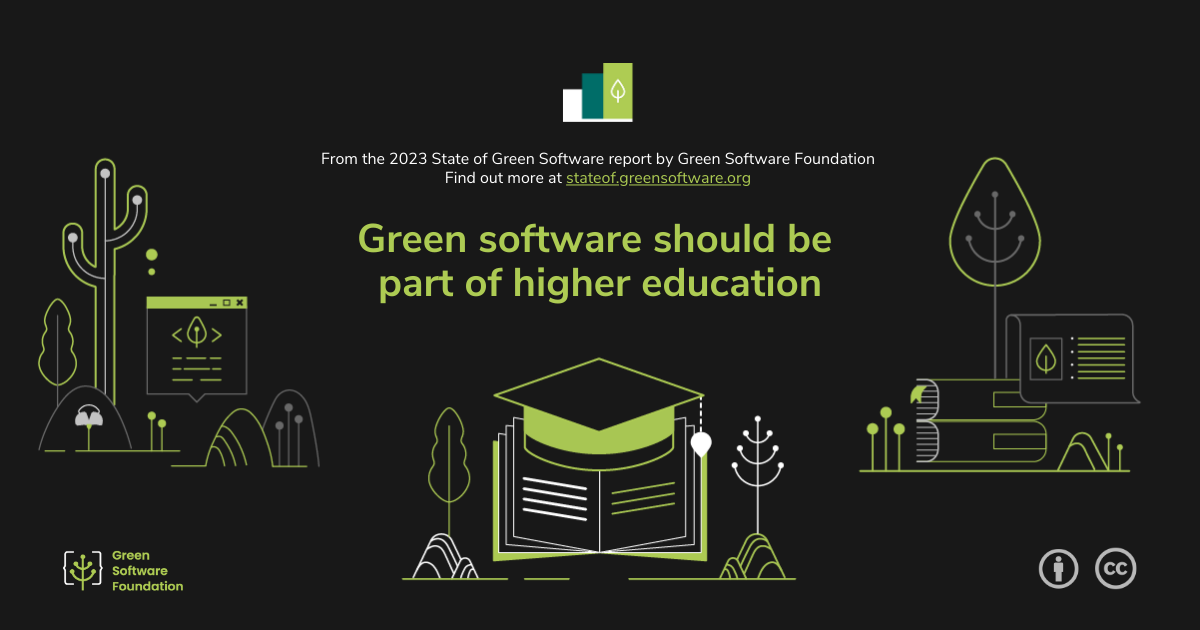Green software should be part of higher education
For the next generation of software practitioners to feel familiar with green software principles and comfortable jumping into sustainability projects, they need more training and education at both the undergraduate and graduate levels. There is a skills gap right now, where engineers, designers, and user experience researchers with sustainability domain knowledge are desperately needed by the ICT industry and for the sake of the climate. However, many respondents to our SOGS survey expressed that current educational and training materials are woefully inadequate. 68% of respondents said more resources would help them and their employers implement green software. If such materials were available to university students, it would prepare software practitioners for tackling complex challenges earlier in their careers, and make them better-suited for the growing number of climate tech and sustainability jobs in the ICT industry; Pitchbook expects climate tech jobs to be a $1.4 trillion industry by 2027.
One SOGS respondent lamented that “there is next to zero literature or theory about [green software]. Another told us, “There seems to be very little science or verification, other than the opinions of people new to the field, in the GSF work. We’d love to see more partnerships with academics who could provide some more reliable scientific basis.” Another person told us, “[Green software] should be a part of student curriculum, if it is not the case, as of today.”
Academic research on green software has consistently increased in the past several years. One study found over 40 publication venues featuring green software research. But a 2019 study calls for better alignment between academic and industry research interests or between green software theory and practice.
In a 2021 paper about the need for more university-based education and training on green software, Saraiva, Zong, and Pereira note that an outsized focus is on hardware. As the authors state, “the quickly surging demand for energy-efficient computing makes it no longer sufficient for traditional computer science curriculum to train our students with only performance-oriented programming skills and mindset. It is paramount to encourage students to ‘think green’ and write greener code. Regrettably, green software is under-represented in current CS curricula of higher education.” While green software research is not yet fully integrated into university curricula, there are a growing number of green software conferences and events along with green software libraries and repositories.
In their survey of computer science faculty, researchers discovered that over 90% of faculty were not yet teaching green software principles but nearly 95% of them believed green software principles should be taught. It’s evident there is a significant gap between the curriculum as it currently exists and the needs of computer science departments. Providing more resources to CS and HCI departments and sustainability organizations within the academic fields would help bolster the profile of green software within academic and industry environments.
